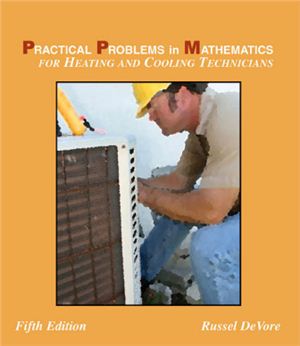Delmar Cengage Leaing, 2008. - 320 pages.
Develop solid practical math skills needed to succeed in the heating and cooling technology field with this updated resource that presents critical information in a way that is straightforward, easy-to-understand, and most importantly, meaningful to the reader. From basic arithmetic to using formulas, Practical Problems in Mathematics for Heating and Cooling Technicians, 5th Edition covers all of the mathematical concepts that technicians are likely to encounter in their everyday, on-the-job tasks. Packed with hands-on exercises and the HVAC-R-specific terminology that previous editions are known for, this updated edition includes references to the latest technology, geothermal systems, as well as zone heating and cooling. Readers will walk away with a thorough understanding of need-to-know math concepts, as well as confidence that they can apply what they have leaed immediately and effectively.
Introduction
Whole numbers
Common fractions
Decimal fractions
Ratio and proportion
Percent, percentage, and discount
Direct measure
Computed measure
Formulas
Stretchouts and lengths of arcs
Trigonometry
Graphs
Bills
Develop solid practical math skills needed to succeed in the heating and cooling technology field with this updated resource that presents critical information in a way that is straightforward, easy-to-understand, and most importantly, meaningful to the reader. From basic arithmetic to using formulas, Practical Problems in Mathematics for Heating and Cooling Technicians, 5th Edition covers all of the mathematical concepts that technicians are likely to encounter in their everyday, on-the-job tasks. Packed with hands-on exercises and the HVAC-R-specific terminology that previous editions are known for, this updated edition includes references to the latest technology, geothermal systems, as well as zone heating and cooling. Readers will walk away with a thorough understanding of need-to-know math concepts, as well as confidence that they can apply what they have leaed immediately and effectively.
Introduction
Whole numbers
Common fractions
Decimal fractions
Ratio and proportion
Percent, percentage, and discount
Direct measure
Computed measure
Formulas
Stretchouts and lengths of arcs
Trigonometry
Graphs
Bills

